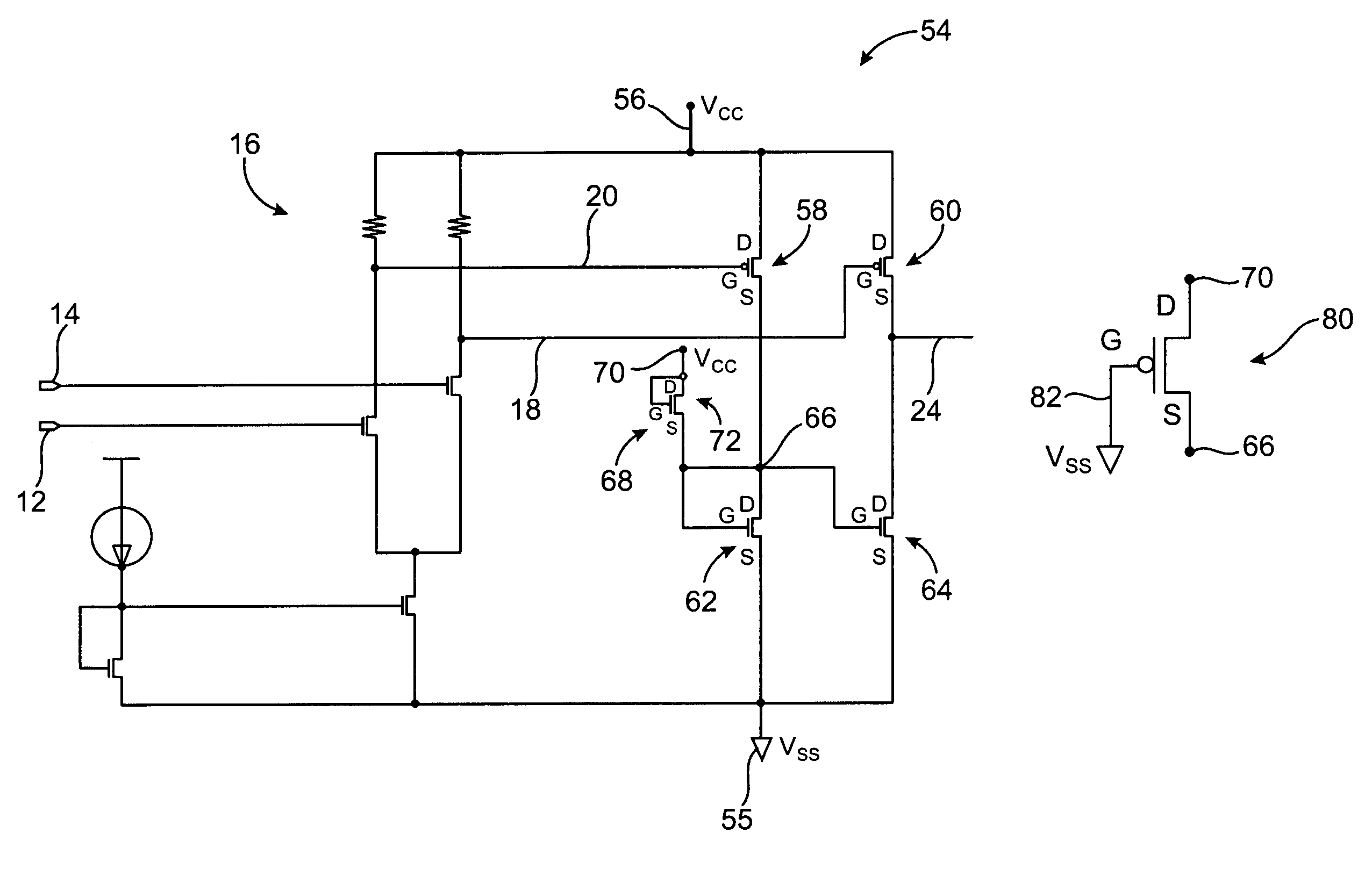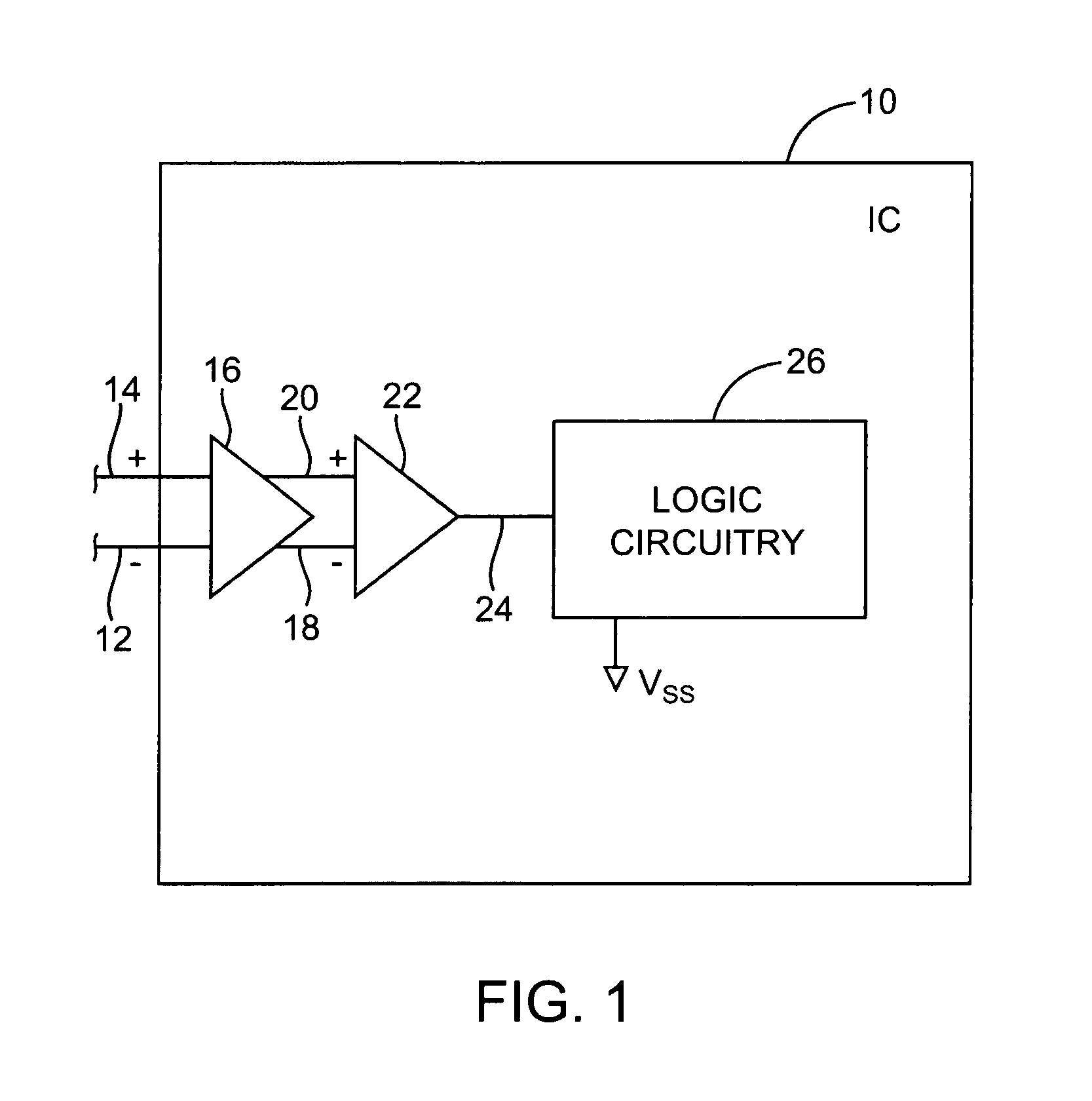Low-jitter differential-to-single-ended data conversion circuits
a data conversion circuit and low-jitter technology, applied in logic circuits, multiple input and output pulse circuits, pulse techniques, etc., can solve the problems of leakage effects that tend to lower the voltage at the node, and achieve the effect of stabilizing the voltage on the node, lowering the voltage at the node, and stabilizing the current mirror and output signal
- Summary
- Abstract
- Description
- Claims
- Application Information
AI Technical Summary
Benefits of technology
Problems solved by technology
Method used
Image
Examples
Embodiment Construction
[0022]The present invention relates to circuitry for converting differential signals to single-ended signals for use on an integrated circuit. Differential signaling schemes use a pair of complementary signals that are referenced to each other. Differential signaling schemes are commonly used where high speed and good noise immunity are desired. For example, communications paths in a system backplane may use differential signaling.
[0023]Digital integrated circuits typically handle data internally in the form of single-ended signals. Single-ended signals are referenced to ground. If a single-ended signal has a high voltage (e.g., a voltage near a positive power supply voltage), that signal is said to be “high” (i.e., it represents a logic “1”). If a single-ended signal has a low voltage (e.g., a voltage near ground, that signal is said to be “low” (i.e., it represents a logic “0”).
[0024]Differential-to-single-ended conversion circuitry (sometimes called level-shifting circuitry) is u...
PUM
 Login to View More
Login to View More Abstract
Description
Claims
Application Information
 Login to View More
Login to View More - R&D
- Intellectual Property
- Life Sciences
- Materials
- Tech Scout
- Unparalleled Data Quality
- Higher Quality Content
- 60% Fewer Hallucinations
Browse by: Latest US Patents, China's latest patents, Technical Efficacy Thesaurus, Application Domain, Technology Topic, Popular Technical Reports.
© 2025 PatSnap. All rights reserved.Legal|Privacy policy|Modern Slavery Act Transparency Statement|Sitemap|About US| Contact US: help@patsnap.com



